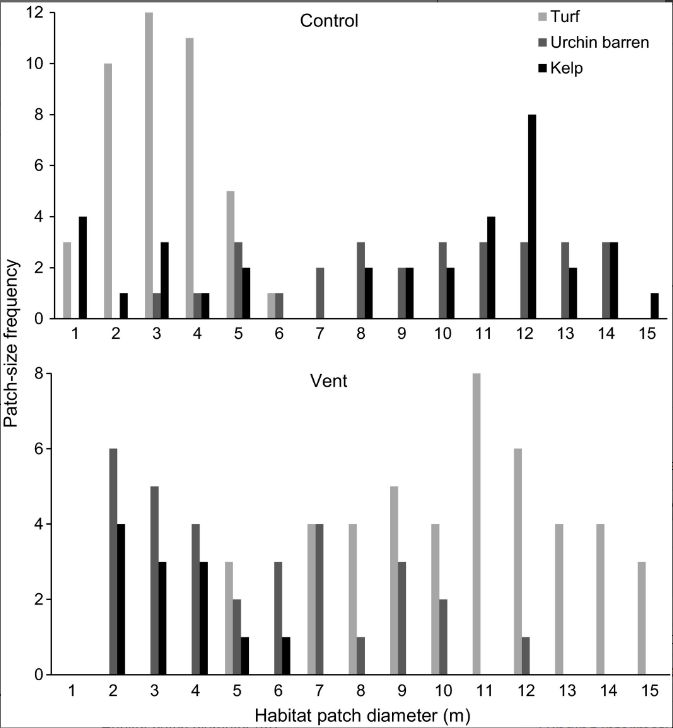How ocean acidification could restructure natural seaweed communities
Sean Connell, of the Environment Institute at the University of Adelaide, recently conducted a study on the effects of ocean acidification (OA) on seaweed communities.
The study was completed in New Zealand’s Bay of Plenty where volcanic vents raise CO2 and increase the water acidity. What the researchers found was that kelp domination was replaced by fast growing turf species. Not only did the volcanic vents increase the growth of turf species, but also inhibited the production of a primary grazer (urchins). These coupled effects allowed turf species to become the dominant in simulated future ocean conditions.
The upper graph showing the control plot where kelp becomes the dominant. The lower graph shows plots with elevated CO2 that become turf dominated.
Predictive studies are full of ambiguity, and fail to address longer term trends such as geographical shifts and adaptions, however, knowing these case studies allows us to be mindful of what we might expect along our own coast.
This study was published in Ecology and can be viewed here
